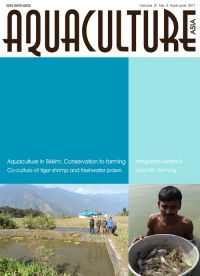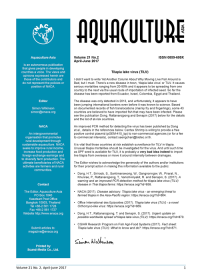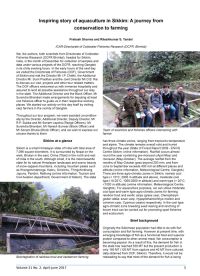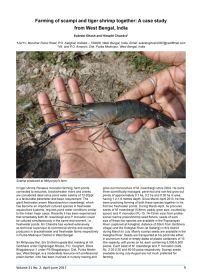In this issue:
Inspiring story of aquaculture in Sikkim - a journey from conservation to farming; farming of scampi and tiger shrimp together - a case study from West Bengal; Labeo pangusia - a candidate for diversification of hill aquaculture; sustainability of an integrated livestock-fish-crop farming system as a small scale enterprise; sustainable coastal aquaculture in India; potential scope and prospects of domestic fish market in Chhattisgarh.
Tilapia lake virus (TiLV) is a relatively recent pathogen causing serious mortalities in farmed tilapia. The virus appears to be spreading via the usual pathway of importation of live fish with inadequate regard for biosecurity protocols. Countries that are at risk should establish surveillance for TiLV. Unusual tilapia mortalities should be investigated. Importation of live tilapia should probably be reconsidered until adequate biosecurity arrangements are in place. Links to some recent advisories and publications are provided.
Sikkim is a small Himalayan state of India with three climatic zones ranging from tropical to temperate to alpine. The moderate-cool and warm agro-climatic zones are suitable for farming rainbow trout and exotic carp species, while brown trout hatchery and ranching can be conducted in the alpine areas. We report on the status of exotic carp and trout farming in Sikkim including farming practices, constraints faced by local farmers and possible solutions.
Labeo pangusia is a highly prized hill stream carp found mainly in the deeper pools of upland streams. Heavy fishing pressure has led to depletion of wild populations in recent years and the species is likely to become threatened if a conservation strategy is not developed. We report on an investigation into the reproductive biology of this species and on the result of successful induced breeding trials.




